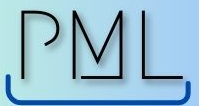Introduction
In the ever-evolving realm of project management, methodologies play a pivotal role in guiding teams to deliver projects successfully. Among these methodologies, Agile has emerged as a dominant force, radically transforming how organizations approach project development and delivery. This article delves deep into Agile as a project management methodology, its principles, practices, benefits, and how it differentiates itself from traditional approaches.
Understanding Agile
Agile is a project management and product development approach that prioritizes flexibility, collaboration, and customer feedback. Initially developed for software projects, Agile emphasizes delivering small, functional bits of a product frequently rather than delivering an entire project at once at the end.
Historical Context
The origins of Agile date back to the 1990s when the software industry grappled with the limitations of traditional project management methodologies like Waterfall. With a changing digital landscape and growing user demands, the need for a more adaptive and iterative method became evident. This realization culminated in the Agile Manifesto in 2001, a declaration by 17 software developers that laid out the core values and principles of Agile.
Core Values of the Agile Manifesto
Individuals and interactions over processes and tools.
Working software over comprehensive documentation.
Customer collaboration over contract negotiation.
Responding to change over following a plan.
Key Principles of Agile
The Agile Manifesto also outlines twelve key principles, some of which include:
Delivering valuable software frequently.
Welcoming changing requirements, even late in development.
Business stakeholders and developers collaborating daily.
Maintaining a sustainable work pace.
Striving for technical excellence and good design.
Popular Agile Frameworks
Several frameworks or methodologies embody Agile principles:
Scrum: A framework that divides projects into time-boxed iterations known as ‘sprints,’ usually lasting two to four weeks. Scrum roles include the Product Owner, Scrum Master, and the Development Team.
Kanban: A visual approach where tasks are represented as cards on a board, moving through defined columns as they progress.
Extreme Programming (XP): Focuses on engineering practices and emphasizes customer satisfaction.
Lean: Rooted in manufacturing, Lean focuses on streamlining processes and eliminating waste.
Benefits of Agile
Flexibility: Agile’s iterative nature means it’s easier to accommodate changes.
Stakeholder Engagement: Regular reviews ensure continuous feedback and alignment with customer needs.
Early Delivery: Regular iterations mean delivering functional components faster.
Risk Management: Regular evaluations help in identifying and addressing risks early.
Transparency: Visualization tools, like Kanban boards, offer clear insight into project status.
Agile vs. Traditional Methodologies
Traditional methodologies, like Waterfall, approach projects linearly: one phase follows another in a sequential manner. Here’s how Agile differs:
Phases vs. Iterations: While Waterfall divides projects into phases (e.g., design, development, testing), Agile breaks projects into iterations, delivering functional components at the end of each iteration.
Flexibility: Changes are hard to implement late in the Waterfall approach, but Agile is designed to accommodate changes at almost any stage.
Testing: In Waterfall, testing is a distinct phase near the project’s end. In Agile, testing is continuous, ensuring that issues are identified and addressed promptly.
Customer Involvement: Agile encourages frequent customer feedback, whereas Waterfall generally requires feedback only at distinct milestones.
Challenges in Adopting Agile
While Agile offers numerous benefits, it’s not without challenges:
Cultural Shift: Organizations entrenched in traditional methodologies might find it challenging to adopt Agile, as it requires a significant cultural shift.
Misunderstandings: Some perceive Agile as a license to skip planning or documentation, leading to potential chaos.
Skill Requirements: Agile demands a certain level of expertise, and team members may require training.
Scalability: Implementing Agile in larger, more complex projects can be challenging.
Conclusion
Agile, with its emphasis on flexibility, collaboration, and customer-centricity, has redefined project management. While it’s not a one-size-fits-all solution, its principles and practices provide a robust framework for organizations aiming to navigate the complexities of today’s project demands. By understanding its core values, benefits, and potential challenges, organizations can make an informed decision on its implementation and harness its power for successful project deliveries.

